Question:1
What is the purpose of the “hard shoulder” on freeways?
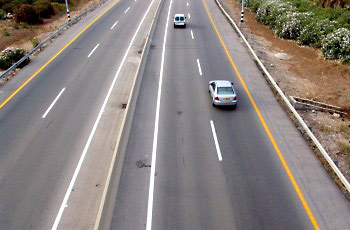
Category : Safety
Question:2
Why is it important to drive on the right side of the road?
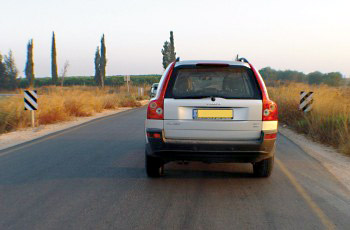
Category : Safety
Question:3
How should we react to the centrifugal force created while the motorcycle turns?
Category : Safety
Question:4
What causes a vehicle to skid on the roadway?
Category : Safety
Question:5
Apart from legal demand, why should a motorcyclist avoid driving in the center of the lane?
Category : Safety
Question:6
What are the actions you are required to take, before intentionally pulling onto the “hard shoulder” of a non-urban road?
Category : Safety
Question:7
What risk is a driver facing while making a right turn?
Category : Safety
Question:8
What is required in order to change lanes without causing any disturbance or risk?
Category : Safety
Question:9
Is there a connection between the driver’s judgment and the use of drugs and alcohol?
Category : Safety
Question:10
In your opinion, is the white vehicle within the curve positioned correctly?
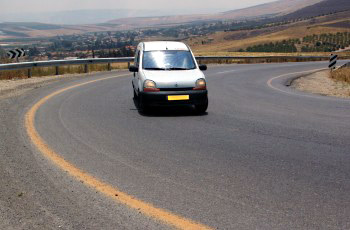
Category : Safety
Question:11
It is prohibited to start overtaking without verifying
Category : Safety
Question:12
What is the main risk of approaching an intersection on a wet road?
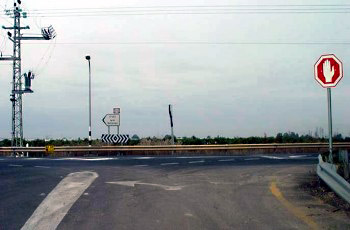
Category : Safety
Question:13
What is required from a driver that approaches the road signs appearing in the following picture?
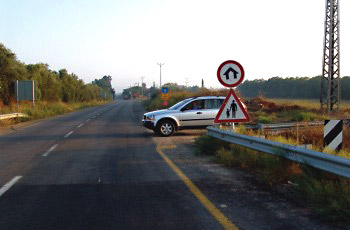
Category : Safety
Question:14
How would you conduct yourself when approaching the intersection that is depicted in the following picture?
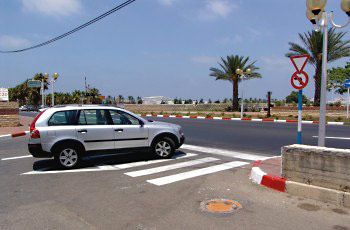
Category : Safety
Question:15
When is there a danger of vehicle skidding?
Category : Safety
Question:16
Are the vehicles within the sharp curve positioned correctly?
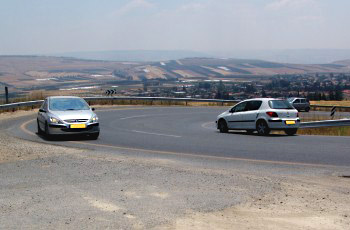
Category : Safety
Question:17
What are the elements that contribute to vehicle skidding?
Category : Safety
Question:18
When is a vehicle affected by centrifugal force?
Category : Safety
Question:19
In a vehicle with a manual (regular) gearbox, it is important to adjust the gears:
Category : Safety
Question:20
What are the provisions for driving in a straight line, without swerving?
Category : Safety
Question:21
How does pedestrian behavior in the area of the intersection affect drivers?
Category : Safety
Question:22
Why is it required to keep a distance from our front, rear and sides?
Category : Safety
Question:23
What is the driver of the silver vehicle required to do according to the following picture?
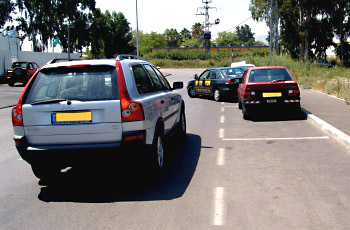
Category : Safety
Question:24
What might be the cause of loss of control of a vehicle?
Category : Safety
Question:25
How would you get the attention of the overtaken vehicle’s driver while overtaking on a freeway (motorway)?
Category : Safety
Question:26
What is a reasonable speed on a freeway(Motorway)?
Category : Safety
Question:27
The white vehicle (1) and the silver vehicle (2) at the intersection, intend to enter the same road. Which of them is obliged to give right of way?
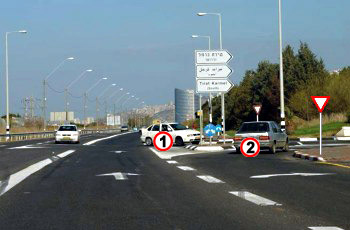
Category : Safety
Question:28
How can we avoid danger when we start driving and when we merge with traffic?
Category : Safety
Question:29
How should you behave in the situation described in the following picture?
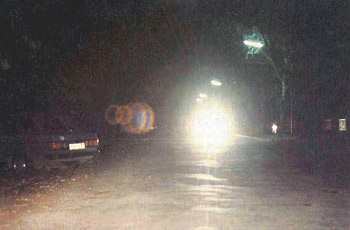
Category : Safety
Question:30
In your opinion, is the truck positioned correctly within the curve?
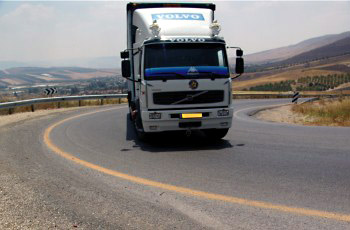
Category : Safety

